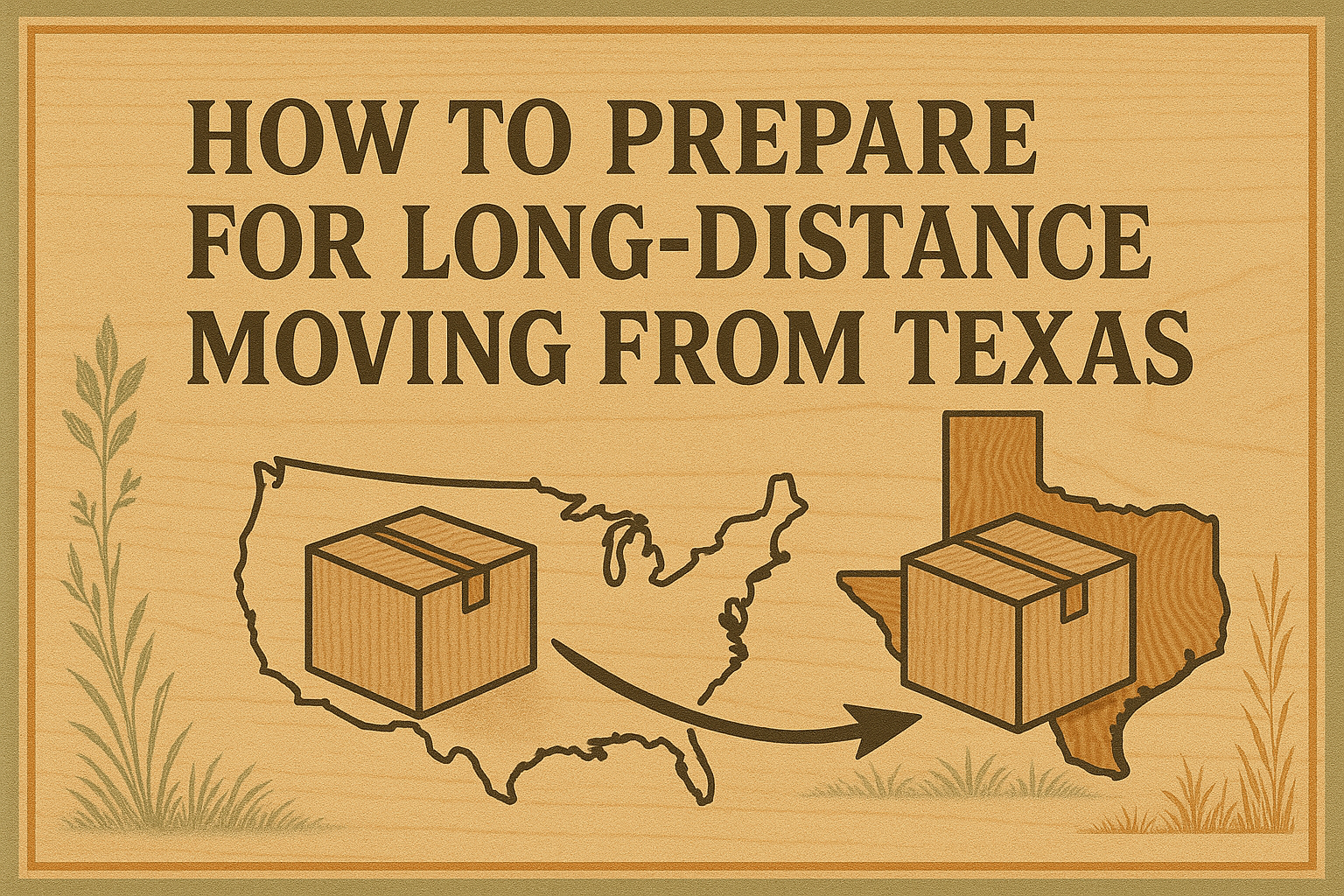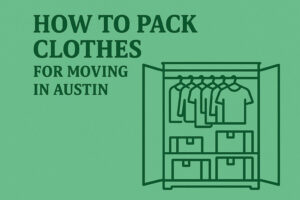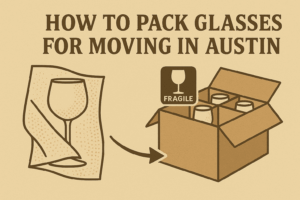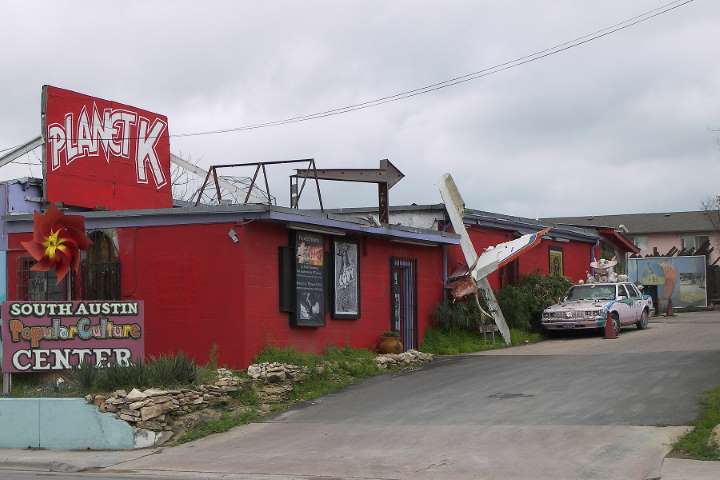
Furniture is among the most expensive items in a household, which is why properly preparing it is important when moving long distances.
Why Preparing Furniture Matters for a Long-Distance Move
Wrapping wood, glass, and upholstered pieces protects them from tearing, breaking, scratches, and stains that may occur during transport. Disassembling larger furniture pieces makes it easier to maneuver them through tight spaces. Preparation ensures a smoother furniture setup in your new home, since it will arrive intact and protect your investment.
Step 1: Create a Plan to Move Furniture Across Country
When you’re planning how to move your furniture across the country from Texas, make an inventory of what you own and determine if all of your pieces are worth bringing to your new living space. Evaluate their value, condition, and figure out their replacement cost. Eliminating those that are worn or damaged can save you money.
Step 2: Take Measurements and Disassemble Large Pieces
Measure each furniture piece and jot down the measurements to share with your moving team when they arrive. Pieces like bed frames, desks, and large tables are safer and more manageable when disassembled. If you take them apart in advance, your moving process will be quicker and smoother. Or if disassembling furniture isn’t included as part of your moving estimate, pay a little extra and have your movers do it.
Step 3: Protect Furniture with the Right Packing Materials
Using the right packing materials is the best way to protect your furniture during your cross-country move. Hiring the right movers will ensure that packing materials are used properly. Quilted pads and heavy blankets can cushion your pieces, while foam and bubble wrap can safeguard glass tops, polished wood, and delicate edges so they don’t get damaged during transit. Corner guards can be used on tables and mirrors to prevent dents or breakage. Ensuring your mover uses these types of materials can give you peace of mind about the safety of your belongings.
Step 4: Wrap Fragile Items and Use Proper Cushioning
Protecting belongings when moving requires layering, cushioning, and careful placement. Wrap each item individually with bubble wrap, soft packing paper, or foam sheets to create a protective barrier around it. Pay attention to corners, handles, and edges, which are the most vulnerable areas during transport. Put the item in a sturdy box with cushioning material under it. Surround each piece with additional padding like packing peanuts, air pillows, or crumpled up paper so no shifting occurs. Make sure you fill gaps to prevent your items from shifting. Tape up the box using strong tape. Label the box as “fragile” and indicate which side is up so your movers know to handle it with special care. Taking all these precautions when packing reduces the risk of cracks, chips, and breakage, so you know your treasured possessions are safe when you’re moving to a new destination.
Step 5: Label and Organize Furniture Parts for Easy Reassembly
An easy way to avoid frustration after a long-distance move is to carefully label and organize all the parts of your furniture before it’s loaded on the truck. After removing the hardware from a furniture piece, place the hardware in a plastic zippered bag and write the name of the furniture piece on it. Tape the bag to the furniture if possible, or store it in a well-labeled box so you know exactly where to find it. This makes it easier to find it when it’s time to reassemble. Label legs, shelves, or panels with removable stickers so they don’t get misplaced. Doing all this will save time and prevent stress when you get to your new home. If everything is organized, your furniture can be quickly and easily set up so you can use it.
Step 6: Consider Climate and Distance When Packing Furniture
A cross-country move exposes your furniture to changing temperatures, humidity, and extended handling that they may not have experienced in Texas. Humidity can make wood swell or warp, and dry air can cause wood or leather to crack. Hot temperatures weaken adhesives and damage finishes. Cold temperatures might require certain materials to be insulated. Wrap wood or upholstered furniture in moving blankets and add moisture-resistant covers or stretch wrap over the blankets if you’re traveling through damp, rainy parts of the country. Pad furniture corners and high-contact areas of your furniture. Plan ahead for possible weather conditions that could harm your furniture to help ensure it arrives safely and in good condition.
Step 7: Hire Professionals Experienced in Long-Distance Moves from Texas
Hiring our experienced Not A Hobby Moving team to prep your furniture for your long-distance move is a smart way to ensure your investment arrives safely. We know how to handle bulky, delicate, and valuable pieces of furniture and are based right here in Texas. We use proven packing methods when you want to securely move furniture across the country. Our expertise can save you time and money, because your furniture will be in our capable hands until it arrives.








